SCREEN BLINDS
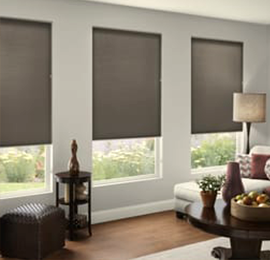
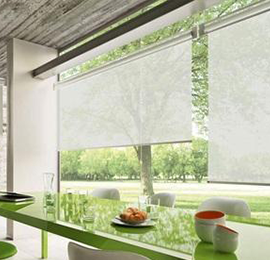
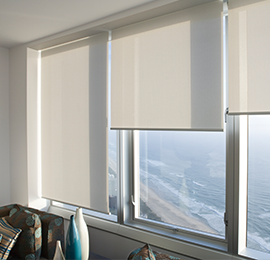
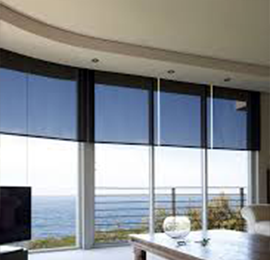
Solar Transmittance
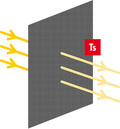
Solar Reflectance
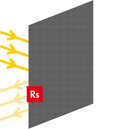
Solar Absorptance
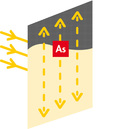
Total solar factor - Gtot
Openness Factor (OF) = Tvnn

Relative area of the openings in the fabric (hole). It is considered as independent of the colour. For fabrics with the same weave, it should be measured using the darkest colour in the range.
Visible Light transmittance (Tvnh)

Visible light reflectance (Rvnh)
Diffuse transmission factor (Tdif)
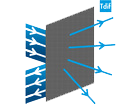
Correlation of the two factors above: Tdif = Tv – OF. It is indicated as Tvndif for the aspects of glare and shape recognition (outward visibility / night privacy). A low figure shows a better visual comfort. However, for natural light control, it is indicated as Tvdifh. It is used to ascertain a fabric’s light diffusion capacity. A high figure means more natural light. Tv = Tvnh = Tvnn + Tvndif
Natural light, which is variable, constitutes an important factor for well-being. Consequently, it should be managed properly in order to avoid glare, which is an intense source of eye fatigue, particularly on computer screens.
As is the case with heat, visual comfort guarantees the efficiency of employees while they work and forms the subject of regulations* setting their work conditions.
Factors enabling glare control to be measured are the optical factores Tv or TL (Visual transmission) and OF (Openness factor).
All fabric weaves are effective for controlling glare. They must be chosen based on the global geographic location and the layout of the buildings.
Solar protection fabric enables the window’s level of luminance to be controlled (natural light diffused in the room) and a reduction in disturbing light & dark contrasts within the field of vision. Depending on its colour, a solar protection fabric can become a light source if sunlight strikes it directly.
An example of the level of luminance of surfaces according to standard NF X 35-103 :
1) Acceptable within a field of = 16 to 150 Cd/m².
2) On the edge of the field of vision = 5 to 500 Cd/m².
For your information, a sheet of paper = 100 Cd/m², a computer screen = 50 Cd/m².
Dark fabric provides better control of glare because it diffuses less light.
The fabrics in the Mermet® collection have excellent glare control properties due to their various openness factors (OF) and weaves. They can filter up to 99% of light rays.
Natural light governs a number of endocrinal functions, and regulates sleep and the body’s water balance. It improves the working conditions experienced by employees
Depending on the sectors in question, it is nevertheless necessary to have a greater or lesser degree of natural light or to avoid it getting into a room by dimming out or blacking out the room.
The solar protection fabric acts on light provided and on the level of dimming out or blacking out.
The level of incoming light varies depending on the opening coefficient (OF). The higher it is, the more the light will get through. The Tv value, for its part, depends on the colour and determines the clarity or brilliance.
A blind fitted with Mermet® fabrics must therefore control incoming light and, as it turns out, the luminance and illuminance levels.
Fabrics from the Mermet® collection allow the best of the natural light to pass through. They thus enable the consumption of artificial light to be limited and enable energy savings, which is a good way of limiting greenhouse gas emissions.
They have several weaves and opening coefficients (up to 10 %) which allow a greater or lesser level of incoming light.
To completely exclude the light, select the 100% Blackout fabrics.
Fabrics in the Mermet® collection also provide interior protection against the discolouration effect of ultraviolet light (UV). They block out between 90% and 100% of the light depending on the fabric. UV accelerates natural ageing.
Outward visibility, which is essential for enabling you to maintain a concept of time and space, is essential for your mental balance.
It reduces stress and contributes to improving productivity.
Again, depending on the room and the orientation of the window, the transparency performance characteristics of a solar protection fabric will be determined by its opening coefficient (OF), its colour, its weave and its manufacturing process.
As a matter of fact, thanks to the fibreglass’s regular coating, the fineness of these fibres, and the regularity of the weave, Sunscreen® fabrics offer a very clear outward visibility.
Giving priority to dark colours facilitates transparency.
For maximum transparency, the Sunscreen® family offers open fabrics (OF > 5 %) and large widths enabling median joins (weldings) to be limited..
Conversely, to protect your business and staff from people looking in at them when the premises are lit up at nighttime, it is preferable to opt for a solar protection fabric from the Blockout family.
015314943, 0860828107, 0879733999